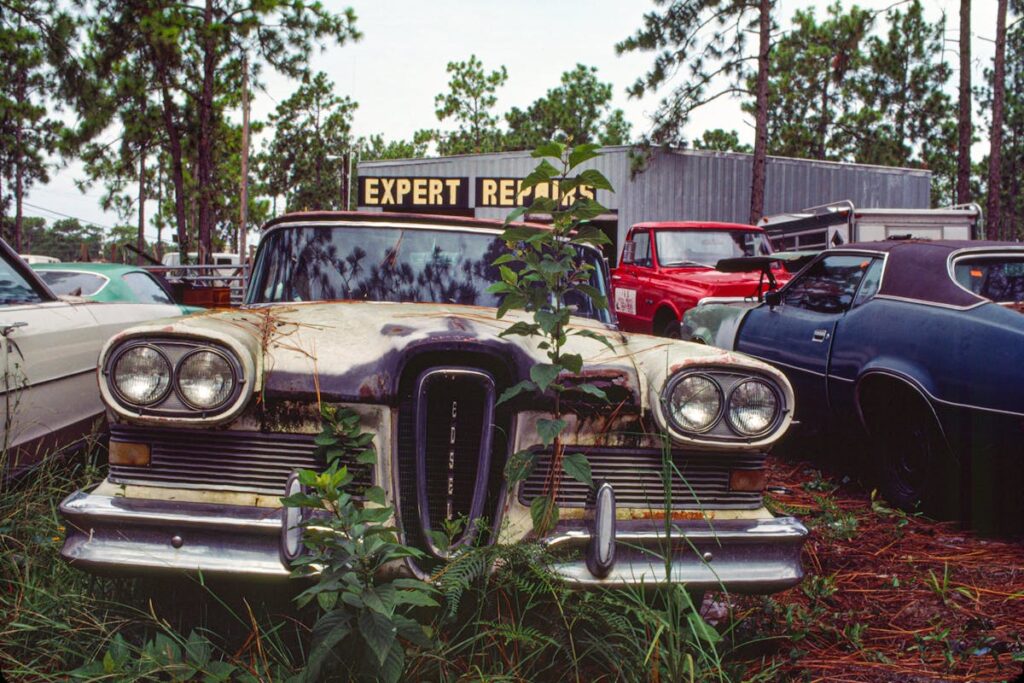While both classic and used cars offer unique benefits to their respective audiences, the market dynamics for these two categories are distinctly different. The classic car market thrives on the allure of historical significance and rarity, often witnessing value appreciation over time. On the other hand, the used car market is driven by practical considerations, with a focus on affordability and reliability. These contrasting factors have more profound implications on buyer demographics, financial aspects, and even the emotional connect established with the vehicle. Consequently, it becomes essential to scrutinize the factors shaping these markets, their impact on the buyers, and the subsequent effects on the auto industry.
Understanding the Classic Car Market
The classic car market, steeped in tradition and nostalgia, presents its own unique set of dynamics and considerations distinct from the traditional used car market. Classic car appreciation is rooted in the vehicle’s historical importance, rarity, and aesthetic appeal, rather than its practical utility. With age, a classic car often gains value, a phenomenon driven by vintage vehicle trends and the growing scarcity of well-preserved models. This appreciation contrasts starkly with the depreciation that ordinary used cars experience over time. In the classic car market, factors such as originality, provenance, and condition considerably influence a vehicle’s worth. As a result, potential buyers and sellers must thoroughly understand these aspects to navigate this market successfully.
Exploring the Used Car Market
Shifting our focus to the used car market, it is essential to comprehend the factors driving demand, as this directly impacts the sector’s dynamics. Pricing in this market is influenced by an array of elements that can fluctuate, creating a landscape that requires careful navigation. Ultimately, understanding the process of used car sales, including negotiation tactics and legal considerations, can equip buyers and sellers with the tools necessary for successful transactions.
Understanding Used Car Demand
Why is it that the used car market seems to consistently hold such a high demand? The answer partly lies in the unique blend of used car features and market trends. Used cars offer affordability and a short depreciation cycle, which appeals to budget-conscious buyers. Furthermore, advancements in car manufacturing have led to longer-lasting vehicles, adding to the appeal of the used car market. Market trends, such as the rise of online car sales platforms, have simplified the purchase process, further driving demand. Additionally, economic fluctuations often compel consumers to seek cost-effective alternatives to new models. While new cars may offer the allure of latest technology and zero mileage, the used car market continues to thrive due to its practical and economic benefits.
Used Car Pricing Factors
Given the strong demand for used cars, it’s equally important to understand the factors that determine their pricing. The primary driver is used car depreciation, which refers to the decline in a vehicle’s value over time. Variables like make, model, age, mileage, condition, and even color can markedly affect depreciation rates. Pricing trends also play an essential role. For instance, during economic downturns, the demand for used cars often rises, leading to increased prices. In contrast, during times of economic prosperity, the demand may decrease, resulting in lower prices. Additionally, technological advancements, safety features, and fuel efficiency can influence a used car’s price. By comprehending these factors, potential buyers can make more informed decisions.
Navigating Used Car Sales
Maneuvering the complex landscape of the used car market requires both knowledge and strategy. A good starting point can be online marketplaces, which provide a vast selection and information on trade in values. Understanding seller motivations can help shape effective negotiation strategies. A key part of any negotiation is a thorough understanding of the vehicle history, which can be obtained through services like Carfax. Inspection tips can be found online, and these, along with a pre purchase checklist, can guarantee you’re buying a reliable car. Financing options should also be researched to guarantee the best rates and terms. To summarize, successfully maneuvering used car sales involves research, wise decision-making, and strategic negotiation.

Differences in Buyer Demographics
The demographics of classic car buyers and used car buyers reveal notable differences. Examining demographic trends, classic car buyers tend to be older, often with more disposable income, appreciating the nostalgia and craftsmanship of vintage vehicles. They are usually experienced collectors with specific buyer preferences, seeking vehicles for recreational use or as an investment. Conversely, used car buyers are more diverse, spanning various age groups, income levels, and purposes. These buyers typically prioritize practicality and affordability, focusing on everyday functionality. They are often first-time buyers, students, or budget-conscious families. This demographic distinction considerably influences the marketing strategies, sales approach, and customer service practices in the classic and used car markets.
Financial Aspects Comparison
Turning our attention to the financial components, we will compare the investment potential of classic cars versus used cars, an analysis that can greatly influence purchasing decisions. We will also examine the rates of depreciation for both categories, an essential factor impacting the overall cost of ownership. Finally, we will discuss variations in insurance costs, an often overlooked but vital aspect of automobile ownership.
Investment Potential in Classics
Investment potential in classic cars presents an intriguing alternative to traditional used car markets. Unlike used cars, classic vehicles often see an appreciation in value over time. This classic car appreciation can offer substantial returns for savvy investors willing to take on the unique challenges associated with this market. However, like any investment, there are risks involved. These investment risks can involve an unexpected drop in market value, high maintenance costs, and potential difficulties in selling the vehicle. It is essential to recognize that the return on investment is not guaranteed and can depend on various factors, including the car’s make, model, condition, and the overall demand within the classic car market. Hence, prospective investors should conduct thorough research before stepping into this market.
Comparing Depreciation Rates
A comparison of depreciation rates between classic and used cars offers a different perspective on the financial aspects of these markets. The depreciation trends present distinct patterns in each market, influenced by factors such as make, model, age, condition, and market stability.
- Classic cars often see a slower rate of depreciation compared to used cars. Their value can even appreciate over time, given the right circumstances.
- Used cars typically depreciate rapidly in the initial years, slowing down as they age. This trend is consistent across models and brands.
- The market stability can greatly impact depreciation rates. Classic cars hold value better in a volatile market, while used cars are more susceptible to market changes.
Understanding these factors can guide buyers in making informed decisions when entering either market.
Insurance Costs Variation
While depreciation is a critical consideration, it is equally important to factor in the insurance costs variation between classic and used cars. Typically, insurance premiums for classic cars are lower than for used cars, largely because classic cars are often driven less frequently and stored more securely. However, this isn’t a rule of thumb as the rarity, value, and condition of the classic car can greatly influence the premiums. On the other hand, used cars, especially those with high mileage or history of damage, can attract higher insurance premiums. As for coverage options, classic car insurance often includes specialized repair or restoration cover, while used car insurance mainly focuses on collision and extensive coverages. The financial impact of these variations should be carefully considered when choosing between the two.
Maintenance and Repair Considerations
Understanding the implications of maintenance and repair is an integral factor when comparing the classic car and used car markets. Regular preventive maintenance is essential for both classic and used cars, but implications vary considerably.
- Classic cars often require specialized care and parts, leading to potentially high repair costs. They may also need frequent care due to their age and delicate nature.
- Used cars, on the other hand, usually require standard preventive maintenance and have more readily available, less expensive parts.
- However, a poorly maintained used car can also lead to unexpected, high repair costs.
Classic vs. Used Cars: Resale Value
Resale value holds significant importance in the debate between classic and used cars. Classic cars, often treasured for their rarity and historical significance, can fetch high prices due to market fluctuations and strong resale trends. They are often viewed as investments, with potential financial returns in the long run. On the other hand, used cars depreciate rapidly, but offer reliable and immediate transportation. Their resale value is generally lower and more predictable, influenced by factors like mileage, condition, and age. However, market fluctuations can impact used car prices as well, with certain models appreciating in value. Ultimately, both classic and used cars have unique resale value propositions, depending on the buyer’s priorities and market trends.
The Emotional Appeal Factor
Although resale value forms a significant part of the classic versus used car debate, the emotional appeal of these vehicles often plays an equally compelling role in the buying decision.
- The nostalgic appeal of classic cars can’t be ignored. These vehicles are not just modes of transportation, but time capsules, stirring up fond memories of bygone eras.
- Sentimental value also factors in. Classic cars often represent personal milestones or cherished relationships, adding a priceless emotional layer to their worth.
- Conversely, the used car market lacks this emotional depth. While a used car may hold practical appeal, it rarely carries the same emotional weight.
In essence, the emotional appeal factor plays a crucial role in differentiating the classic car market from the used car market.
Making the Right Buying Decision
How does one maneuver through the complexities of the classic and used car markets to make a sound buying decision? Sound buying strategies incorporate understanding buyer motivations and evaluating market trends. In the classic car market, motivations often pivot around emotional appeal, rarity, and investment potential, while used car buyers typically emphasize practicality and affordability. Researching the vehicle’s history, inspecting for mechanical issues, and comparing prices are key considerations. For classic cars, consider authenticity, rarity, and vehicle condition. For used cars, consider mileage, age, and condition. The end goal should always be to make an informed buying decision that aligns with your motivations, financial situation, and practical needs. By applying these strategies, maneuvering through these markets becomes a manageable and rewarding endeavor.
Frequently Asked Questions
What Insurance Options Are Available for Classic and Used Cars?
Classic car insurance typically covers vehicles of significant value due to age or rarity, offering agreed-upon value coverage. Conversely, used car insurance generally provides actual cash value, considering depreciation in its coverage options.
How Can I Verify the Authenticity of a Classic Car Before Purchasing?
To verify the authenticity of a classic car before purchasing, research the vehicle’s history and inquire about the restoration process. Confirm the vehicle’s original specifications and compare them with current condition for further authenticity checks.
What Environmental Impacts Do Classic Cars and Used Cars Have?
Classic cars, not subject to modern emission standards, can produce more pollutants. Used cars vary in environmental impact, depending on their fuel efficiency and how they were maintained over their lifespan.
Are There Specific Driving Regulations for Classic Cars?
Yes, specific driving regulations for classic cars exist. These classic car regulations vary by location, often relating to safety, emissions, and usage. Vintage vehicle laws guarantee these automobiles comply with modern standards while preserving their historic value.
What Online Platforms Are Best for Buying Classic and Used Cars?
For classic cars, online marketplaces such as Hemmings and ClassicCars.com are ideal. For used cars, websites like AutoTrader, CarGurus, and eBay Motors are preferred due to their wide range and auction site capabilities.

